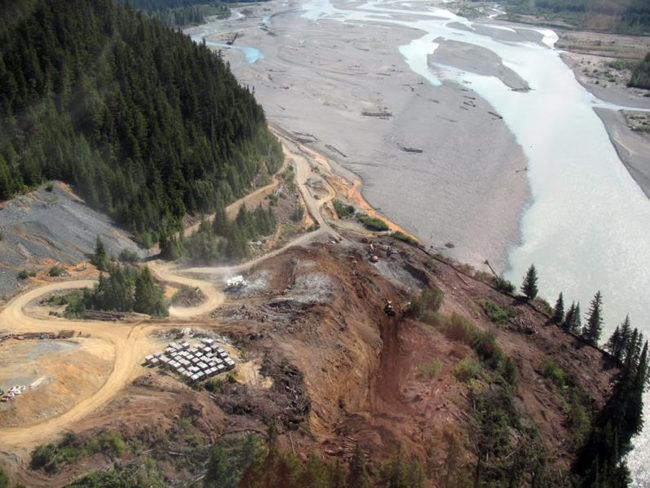
Chieftain Metals’ stock prices continue to fall.
An agreement with a Chinese investor has been cancelled.
But the company’s website boasts “The Chief” will soon be a reality.
It’s all “blue sky,” according to an analysis of re-opening the Tulsequah Chief Mine at the headwaters of the salmon-rich Taku River.
Chieftain Metal’s latest feasibility study shows a 2,000 ton underground mining operation with a nine-year life.
Capital costs before production are estimated at nearly $450 million.
Tulsequah financing is Chieftain’s major focus. The company received its final permits from the British Columbia government in February; CEO Victor Wyprysky is marketing the project as “construction ready.”
“We’re very lucky that we have a strong project, high grades, good country, permitted, good feasibility, all that important stuff. But it will take longer than in say a roaring market where everyone’s throwing money at everything.”
Chieftain has cancelled an agreement with China Development Bank and engineering company CAMC, and Canadian subsidiary Procon.
Announced last September, Procon was to arrange 100 percent of mine financing. Nothing has happened since then and Chieftain is now looking for another partner.
Canadian mining analyst Joan Kuyek holds little hope for revival of the Tulsequah Chief Mine.
“It’s a stupid project.”
Kuyek teaches mining law and policy at Queen’s Law School in Ontario, Canada.
She’s reviewed the Tulsequah project twice; her most recent report is based on the feasibility study and the company’s baseline for mine financing.
“All the information that they present to investors is based on almost a blue sky scenario.”
“There would have to be no inflation, there would have to be no increased capital costs, reclamation costs would have to be very, very low. There couldn’t be any accidents,” she says.
Engineer Jim Kuipers, of Butte, Montana, joined Kuyek in the Tulsequah review, requested by the international group Rivers without Borders.
Kuipers has worked in the mining industry for more than 30 years and done numerous feasibility studies.
“What I did was apply what are internal mining industry standards to my review. And my conclusions therefore are largely based on what I would consider to be how the mining industry would largely view this project.”
He says the Tulsequah project is “extremely high risk” in the current mining economy of decreasing metals prices and increasing capital and operating costs.
“We’ve seen in the mining industry that at least some percentage of mining projects, particularly when we see down turns, almost inevitably go bankrupt. And this project shows itself to have that type of vulnerability.”
Investors aren’t hearing that. Chieftain CEO Wyprysky recently told MSN-TV Canada that production costs will be low at the poly-metals mine.
“By net revenue, we’re almost half gold and silver, when you offset the gold and silver against the zinc production, it gets us to minus a dollar a pound production cost of zinc,” Wyprysky said.
Wyprysky is also promoting new geologic information indicating Chieftain’s property has significant volcanic features that host bigger and multiple deposits.
He calls those deposits “pearls along a string,” though more drilling is needed to verify the theory. Even so, Wyprysky says the additional deposits and possible longer mine life will help the company secure financing.
Kuipers says the latest geology report verifies his concerns about the project.
“In its present state, with its present reserves, it is not a highly attractive project. So it appears they are admitting the need to find additional reserves to bolster the project,” Kuipers says.
Both professor Kuyek and engineer Kuipers say the company has seriously underestimated its environmental liabilities.
Kuyek points to a system installed in 2011 to treat acid water draining from the old mine into the Tulsequah River. Canadian officials required the treatment when Chieftain purchased the property.
The company shut down the system after six months, citing prohibitive costs.
“And they said it was going to cost 4-million dollars a year, instead of one million. I just think that’s so indicative of the kind of sloppy planning they do; the blue sky strategizing.”
Traded on the Toronto Stock Exchange, Chieftain Metals Corporation closed at 85 cents per share on Friday, down 45 percent from its closing price a month ago.
